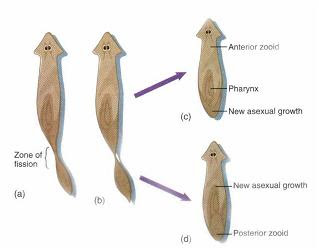
There are over 20,000 species of Platyhelminthes, of which most are parasitic or free-living in nature. They are also commonly known as flatworms (unsegmented) and have ribbon-like structures. They are divided into four different classes known as Turbellaria (free-living flatworms), Monogenea (Monogenetic flukes), Trematoda (Digenetic & Aspidogasterean flukes) and Cestoda (Tapeworms).
General Characteristics
All flatworms share similar general characteristics. They are triploblastic (3 cell layers; outer ectoderm, inner endoderm and mesoderm) and they have specialized tissues to perform various functions. They are also bilaterally symmetrical (flattened dorsoventrally) meaning that the left and right side of their bodies are mirror images of each other and they have distinctive head and tail ends.
Flatworms are also acoelomate meaning that they do not have any body cavity. Thus the organs within the body are in direct contact with the epithelium.
Another general characteristic is that these flatworms lack special circulatory or gas exchange system. How then, is it able to survive with such a simple body plan? By having a flat body (small diffusion distance), it allows easy gaseous exchange through diffusion across body walls between tissues and the environment.
However, there are also limitations to this great body adaptation. Due to its flat bodies, it increases the body surface area for gaseous exchange, but it also creates many problems such as desiccation (drying). Therefore, platyhelminthes are typically found only in moist areas.
Organ Systems
The nervous system of the platyhelminthese is made up of nerve tissues and nerve chords. The cerebral ganglions are located at the head of platyhelminthes that can be called ‘brain’. From this nerve tissue, the nerve chords are then separated into two where it sends projection to the tip of the worm. At the same time, there are also other nerve branches that branched out from the main body and these branches are connected to sensory organs which detect sight, touch and movement. To illustrate, the simple diagram on the right shows the nervous system of platyhelminthes.
Platyhelminthes do not have any anus for excretion. How are they then able to excrete the waste from their body?
Although they do not an anus, they do have flame cells (enlarged cells) which have tube-like structures called protonephridia (excretory pores) to excrete out the wastes in the body.
Watch this video on flatworms to get a general view of this phylum! Phylum Platyhelminthes .Generally, platyhelminthes are divided into 4 classes namely Turbellaria, Monogenea, Trematoda and Cestoda.








